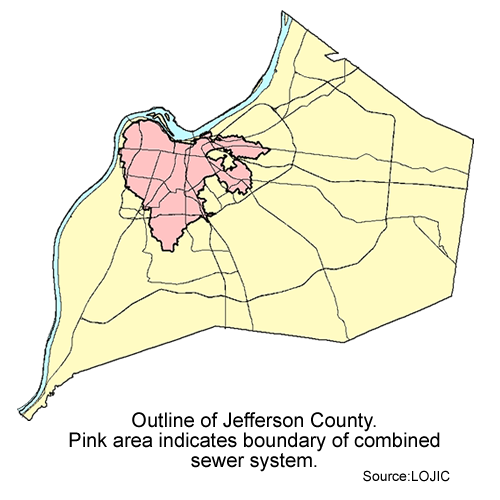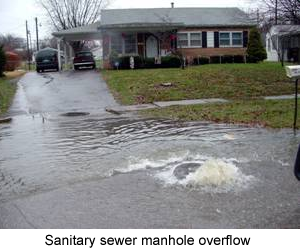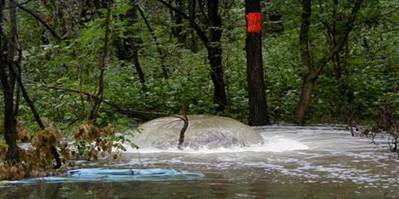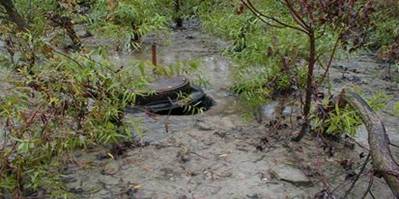Louisville’s Sewer Overflows
Home About Us Louisville’s Sewer Overflows

Sanitary sewers are designed to carry wastewater from sinks, showers, toilets, washing machines and dishwashers away from buildings, transporting that wastewater to a treatment center. Once treated to regulatory standards, that water is then released back to its source – either a stream or the Ohio River.
The earliest sewers in Louisville were built in the 1800’s to drain stormwater to a river or stream after a rain event. When indoor plumbing became common in Louisville homes, a sanitary sewer became necessary to drain wastewater. The most convenient way to accomplish this was to combine the sanitary waste with the stormwater in the same pipe. These “combined sewers” still exist, and can be found in the area inside I-264 (smaller loop on the map).
Combined sewers were built to send sanitary wastewater to treatment most of the time, but during rain events may overflow” into waterways to prevent backups of sewage into buildings. These overflows are called combined sewer overflows (CSOs).
The area outside I-264 is served by separate sanitary sewers, which are designed to carry only wastewater. Stormwater is conveyed through a separate drainage system. These separate sanitary sewers were not built to overflow. However, stormwater finds ways to enter these pipes. When the pipes fill up, they may overflow – either into a waterbody, onto the ground or into a building. These overflows are called sanitary sewer overflows (SSOs).

Untreated wastewater, even when diluted with stormwater, carries bacteria and pollutants that may cause illness if accidentally ingested. MSD is pursuing an aggressive sewer overflow abatement program under a federal consent decree by the Environmental Protection Agency (EPA) and Kentucky Department for Environmental Protection (KDEP).
MSD is working diligently to reduce sewer overflows, many of which can be prevented. MSD is committed to doing our part to correct system deficiencies and partnering with Louisville Metro residents to develop long-term solutions aimed at improving the quality of our county streams and the Ohio River.


